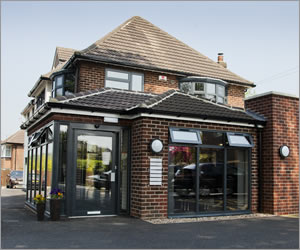Bone Grafts for Patients with Degraded Jawbone Structure
How augmentation helps patients with insufficient bone for successful implant placement.
Whilst the large majority of dental patients who attend our Derby dental implant centre will be immediately suitable for the procedure; there will be cases where a bone graft, or augmentation, will be needed to improve the chances of a success.
This is generally the case when, upon examination, we discover that the jawbone has become degraded and will provide insufficient bone into which to place the titanium implant. In cases such as these, placing the implant immediately would likely result in the procedure failing.
To prevent this occurring, a bone graft can be performed which will strengthen and enlarge the underlying bone structure and provide a much stronger foundation into which to place the dental implant.
Who suffers from bone loss?
Bone loss happens quite naturally as we get older. This is general throughout the body and also applies to the bone in the jaw and mouth. Because of this, older people are more likely than younger people to need a bone graft prior to the implant procedure.
It is not just the elderly though – younger patients can also suffer from bone loss, especially if they are significant drinkers or smokers. Both of these factors are known to contribute to bone deterioration and are best avoided. By doing so, you will also decrease the risk of gum disease and other dental problems too.
Gum disease
As mentioned above, smoking and drinking can contribute to gingivitis and ultimately periodontitis which attacks the jawbone. These are just two of the contributing factors though and an overall good oral health regime with regular brushing and flossing is very important to prevent serious incidences of gum disease. A regular visit to the Darren Bywater Dental Implant Centre is also strongly recommended to ensure that your overall oral health is monitored carefully. Gum disease must always be addressed before any implant procedure can take place.
Missing teeth
Degraded jawbone structure is also commonly found in patients who have had a tooth missing for a while. This is due to the body, in effect, ‘telling’ the jawbone in that area, that it no longer has a task to perform in holding a tooth in place and, consequently, the bone starts to thin there. This is also sometimes an issue for people who have worn a partial denture for a long time and then subsequently opt for an implant to replace it.
The Bone graft procedure
A bone graft procedure is relatively straightforward and involves a small piece of bone, either from the patient or an artificial substitute, being grafted onto the area of the jawbone where a dental implant will be placed. The gum is then closed, allowing the bone to begin it’s integration process with the natural jawbone. This can take a little while but it is important to allow the bonding to become strong enough to support the new implant once it is placed.
In the majority of cases, dental implant patients at the Darren Bywater Dental Implant Centre will not need to have this procedure. However it is comforting to know that the option is available where bone loss would otherwise have prevented it.
Google+

Comments are closed.